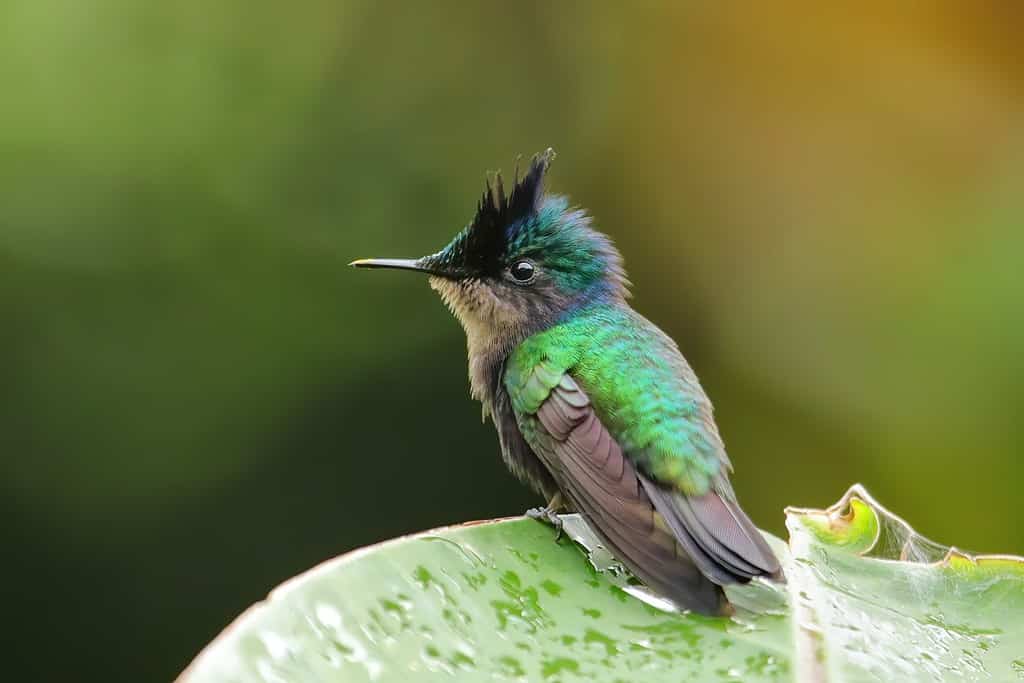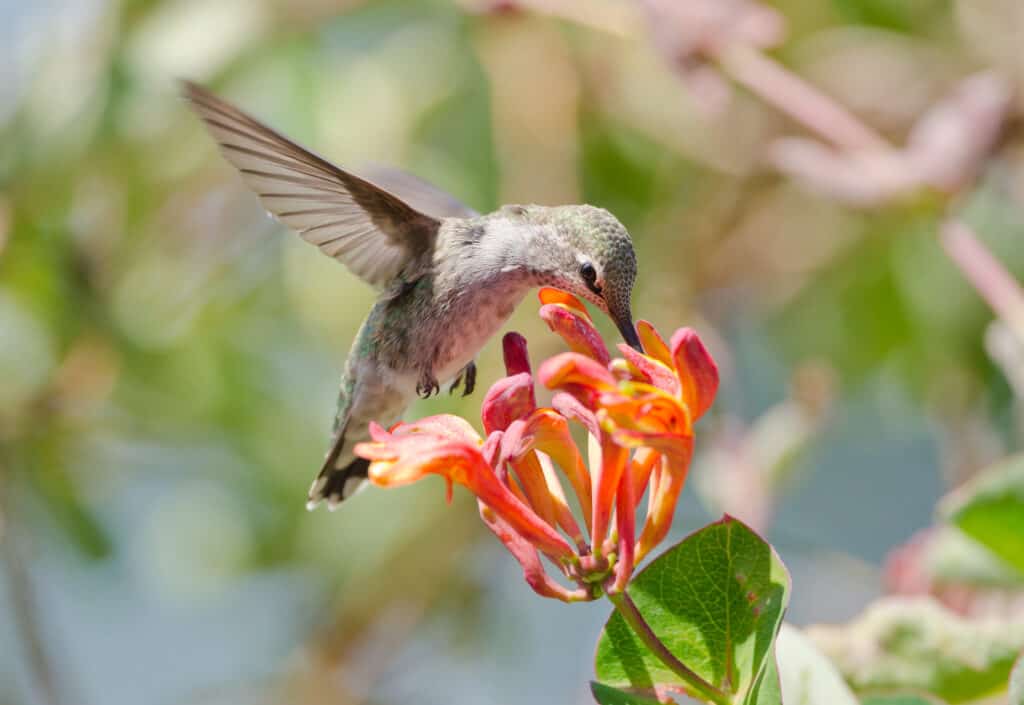Some of the first signs of spring are temperatures rising, flowers blooming, and birds returning north after spending the winter in the south. One of these little creatures is the hummingbird who completes an impressive migratory journey each year. But when do these birds leave for the year, and when can locals expect to see them once more? Let’s explore where hummingbirds go during their migration, and discuss when they’re due to return to the state of Nevada.
Hummingbird Migration: A Brief Overview

Many hummingbirds live to be between three and five years old.
©Don Mammoser/Shutterstock.com
While a variety of birds migrate, others choose to stay up north during the colder months, such as blue jays, ravens, and a variety of owls. However, many hummingbirds can’t tolerate the colder temperatures and lack of food sources during the winter. Because of this, many of them choose to retreat to warmer climates during this time of year. According to the Audobon Society of North Virginia, “Ruby-throated Hummingbirds weigh little more than a penny but can fly 500 miles across the Gulf of Mexico in less than one day. The three-inch-long Rufous Hummingbird makes one of the longest migratory trips in the bird world – 3,900 miles, or 78.4 million body lengths.”
These feats are even more impressive when you consider how often hummingbirds must eat in order to maintain their body weight. Their journeys are long, their intake needs are high, and inclement weather can be deadly if encountered along the way. Hummingbirds are truly impressive little creatures!
Hummingbirds in Nevada

Anna’s hummingbird can be spotted during the winter in Nevada.
©Birdiegal/Shutterstock.com
Although there are about 360 different hummingbird species, only a handful have been spotted in the state of Nevada. Some of these include Anna’s hummingbird, calliope hummingbirds, Rufous hummingbirds, and black-chinned hummingbirds. Among these, Anna’s hummingbird is nonmigratory and many of them can be spotted year-round in the state of Nevada. Rufous hummingbirds are threatened, and seeing one can be quite a rare event. Nevada residents have the best chance of spotting one during their fall migration in the early fall months. These birds typically leave the state of Nevada during September and October. Many will return to this state during March when daylight hours begin to increase once more.
Why Do Hummingbirds Migrate?

At rest, the heart of a hummingbird will beat roughly 200 times per minute. While flying, this rises to about 1,200 beats per minute.
©Ramona Edwards/Shutterstock.com
A majority of birds migrate out of necessity. While some birds begin their journey after noticing that their food sources have become more scarce, this isn’t the case for hummingbirds. These tiny animals can’t afford to wait until they become food insecure to begin traveling because many will die after just a few hours without eating. Decreasing daylight hours prompt them to begin traveling down south little by little. While a variety of climates in the south have more insects and nectar available for consumption, many hummingbirds will travel all the way to Mexico to overwinter. This is an arduous journey, and many hummingbirds don’t survive it. Those interested in helping support these tiny birds should consider buying hummingbird feeders and setting them up in your garden or yard.
Final Thoughts
While it’s easy to worry for these small creatures, the truth is that hummingbirds are accustomed to this high-intensity lifestyle. Although hummingbirds might look delicate on the outside, these animals are actually incredibly tough and resilient. In fact, these long journeys are a natural part of life for them. All we can do is cheer them on (and offer them some fuel) as they embark on this impressive expedition each year.
The photo featured at the top of this post is © Ramona Edwards/Shutterstock.com
Thank you for reading! Have some feedback for us? Contact the AZ Animals editorial team.







